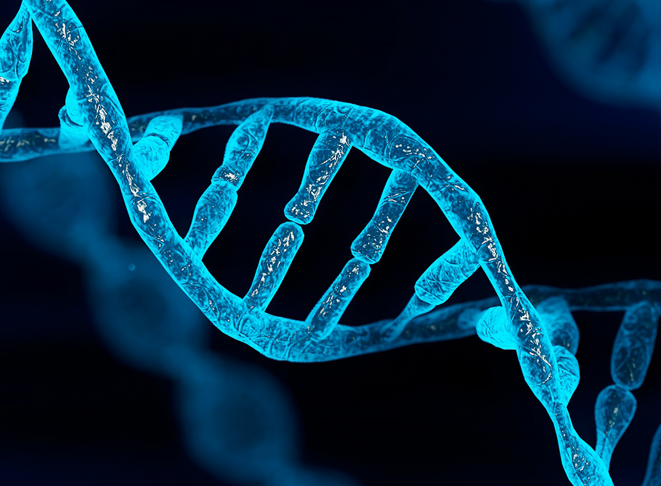Microorganisms including bacteria, fungi, algae and viruses are important tools used for a wide variety of pharmaceutical and/or biotechnological processes including but not limited to drug and vaccine production, single cell protein production, production of probiotics and other therapeutic, cosmetic or pharmaceutical products. For effective and sustainable production of useful microbial by-products, microorganisms can be genetically engineered or manipulated in order to ensure improved production of quality products in large amounts.
The manipulation of microorganisms at the genetic or molecular level simply involves altering the genetic makeup of the microbe in question; and such manipulation usually includes processes that modify the organisms DNA in order to get an improved microbial strain for effective and sustainable production of useful microbial by-products or metabolites. As aforementioned, microorganisms are manipulated for several medical, pharmaceutical, agricultural and commercial purposes; and this manipulation is usually carried out using advanced molecular techniques including molecular cloning of genes.
Microorganisms are also applied in several bioremediation activities which help to clean up the environment especially in oil spillage areas. More so, microbes can also be genetically engineered and used to manage waste disposal including sewage and other industrial or domestic wastes that are harmful to man, the environment and plants and animals. The genetic manipulation of microbes including bacteria, fungi and viruses offers several ways of engineering microorganisms in such a way that novel strains with the capacity to perform a handful of activities beneficial to man and his environment are developed.
Some of these novel strains are used to solve many societal and/or environmental problems including but not limited to pest control, bioremediation, biodegradation, enhanced crop production, improved pharmaceutical, cosmetic and therapeutic productions and degradation of wastes using genetically engineered microbes. The DNA of an organism is manipulated via a process known as genetic engineering.
Genetic engineering is defined as the process of manipulating the genetic makeup of an organism. It is the modification of an organism’s genetic composition by artificial means. And genetic engineering usually involves the transfer of specific traits, or genes, from one organism into a plant or animal of an entirely different species. Genetic engineering encompasses those recent biotechnological technologies used to change the genetic makeup of living cells. Some of these techniques include molecular cloning, electroporation, transformation, transfection and conjugation.
Transformation, electroporation, transfection and conjugation are examples of molecular tools or gene transfer methods that are used to deliver selected gene(s) into desired organisms or living host cells; and these processes encourage the exchange of genetic materials amongst organisms. Cloning is the process of introducing a foreign DNA molecule or gene into another organism.
With genetic engineering, the gene or DNA of an organism can be removed and manipulated in vitro to acquire certain beneficial characteristics; and after a successful in vitro manipulation, the mutant heritable material or DNA can then be re-introduced into a host cell or vehicle that will transport the manipulated gene into another organism.
Genes are the chemical blueprints that determine an organism’s phenotype; and when the DNA or genes of one particular organism is moved to another organism, the genetic traits or genotype of the former organism will be transferred to the recipient organism. Phenotypes are the observable features of gene expression, and they reveal the physical appearances or metabolic capabilities of organisms. Genotype on the other hand refers to all the genes (DNA) that encode characteristics/traits of an organism.
During genome or DNA replication in a cell, the genetic information encoded in the gene is usually transformed or changed into the molecule that the gene encodes, usually a protein molecule. This process of turning the information from the gene in the DNA into a protein molecule or other molecules that it encodes is generally known as gene expression. Since not all genes are expressed in a cell, it is however noteworthy that only expressed gene can contribute to the phenotype of an organism.
If the genes are not expressed during DNA replication, the information it contained cannot significantly contribute to the organism’s phenotype. Gene expression in living cells mainly involves the synthesis of RNA and protein; and this process of RNA and protein synthesis (otherwise known as gene expression) occurs all the time in every living cell. The gene is the foundation of most molecular biology techniques, and this is usually due to the notion that the gene harbours the heritable genetic material of the cell.
And since one of the most important genetic activities that living organisms undergo during each round of their cell division is the replication of their genome, understanding this important biological process (i.e. genome replication) and how the cells genome works has enabled molecular biologists to deliberately manipulate the organism’s gene or DNA at a molecular level to synthesize desired products that are of commercial, health and environmental benefits.
Genetic engineering allows organisms to acquire targeted combinations of new genes or DNA from various sources so that they can begin to act or metabolize in certain ways. It allows organisms to acquire those genetic traits they naturally lacked via an artificial means especially through molecular cloning. Through advanced biotechnological processes, certain desired target genes of living organisms can be manipulated with a view to influencing their natural traits. Genetic engineering and/or the molecular manipulation of organisms usually lead to the production of transgenic organisms and genetically modified organisms (GMOs).
Transgenic organisms are those organisms with different sets of genes acquired from a different organism. If genetic material from another species is added to another host organism, the resulting organism is generally called a transgenic organism. Genetically modified organisms (GMOs) are those plants, animals or microorganisms whose genetic makeup or DNA has been changed through genetic engineering. Genetically modified microorganisms have applications in various areas including but not limited to agriculture, health, research, food, textile and paper industries.
Some of the beneficial outcomes of manipulating microorganisms at the molecular level include increased food production and reliability, and increased agricultural yields. The genetic manipulation of microorganisms also leads to enhanced taste and nutritional value of crops; and it also leads to decreased losses of crops due to various biotic and abiotic environmental stresses. Microbes serve primary and secondary roles in food fermentation and in food spoilage, and they can produce enzymes or other metabolites used in food production and processing. Thus microorganisms play significant roles in food production. Wine, bread, and cheese are common examples of ancient foods, still popular today, that depend on microbial ingredients and activities; and these products are produced via genetic manipulation of microbes.
Microorganisms have been used and manipulated since time immemorial to produce a wide variety of goods and services including cheese, yoghurt, bread and wine through the process of fermentation even at a time when the scientific basis behind these processes were unknown. Microbes whose genes have been manipulated by biotechnological processes have been used to improve agriculture and also to enhance the environment especially in the area of cleaning up the environment and making it free from wastes that harm human health.
Mutation and selective processes have allowed scientists to effectively manipulate microbes at the molecular level. But the advent of recombinant DNA technology and/or genetic engineering as aforementioned has revolutionized microbial manipulation at the molecular level. Recombinant DNA (rDNA) technology (genetic engineering) is the biotechnological technique or process that is used to cut a known DNA sequence of an organism and then introduce the modified and cut DNA molecule into another organism.
One of the major reasons of doing this is to alter the genotype of the recipient host organism so that its phenotype during genome replication could also be changed into a desired and expected outcome. Some of the approaches involved in the genetic engineering of microorganism’s DNA or gene are shown below; and these measures are usually employed to generate novel DNA molecules in a host organism. These approaches are:
- Disruption of undesirable gene functions
- Overexpression of desired genes
- Improving protein properties
- Improving or enhancing product yield
- Enhancing product metabolic pathways
- Removing competing metabolic pathways
- Eliminating feedback regulation mechanisms
- Manipulating transcription regulatory genes
BENEFITS OF MOLECULAR MANIPULATION OF MICROORGANISMS
- Molecular manipulation of the gene helps biologist to study gene arrangement.
- It helps us to understand how genes are expressed and regulated in the cell.
- Gene manipulation allows us to obtain a changed and desired protein product.
- Gene manipulation leads to improved and increased production of a desired product.
- It also helps scientist to suppress the expression of a particular gene in an organism.
- With gene manipulation, multiple copies of a DNA molecule or a segment of a gene could be artificially produced.
- Gene manipulation allows us to create transgenic organisms and genetically modified organisms.
- It also allows us to create organisms with desirable or altered traits.
References
Bains W (1998). Biotechnology: From A to Z. 2nd ed. Oxford University Press, New York, USA.
Bourgaize D, Jewell T.R and Buiser R.G (1999). Biotechnology: Demystifying the Concepts. Pearson Education, San Francisco, CA.
Brian Robert Shmaefsky (2006). Biotechnology 101. Greenwood Publishing Group, Inc, USA. Pp. 1-273.
Bushell M.E (1998). Application of the principles of industrial microbiology to biotechnology (ed. Wiseman, A.) Chapman and Hall, New York. Pp. 5–43.
Byong H. Lee (2015). Fundamentals of Food Biotechnology. Second edition. Wiley-Blackwell, New Jersey, United States.
Chrispeels M.J and Sadava D.E (2002). Plants, Genes, and Crop Biotechnology. 2nd edition. Jones and Bartlett Publishers, Sudbury, MA.
Clark D.P and Pazdernik N (2010). Biotechnology. First edition. Elsevier Science and Technology Books, Amsterdam, Netherlands.
Das H.K (2010). Textbook of Biotechnology. Fourth edition. Wiley edition. Wiley India Pvt, Ltd, New Delhi, India.
Dictionary of Microbiology and Molecular Biology, 3rd Edition. Paul Singleton and Diana Sainsbury. 2006, John Wiley & Sons Ltd. Canada.
Glick B.R and Pasternak J.J (2003). Molecular Biotechnology: Principles and Applications of Recombinant DNA. ASM Press, Washington DC, USA.
Godbey W.T (2014). An Introduction to Biotechnology. First edition. Woodhead Publishing, Cambridge, United Kingdom.
Jee C and Shagufta (2007). Environmental Biotechnology. APH Publishing Corporation, Darya Ganj, New Delhi, India.
Lee S.Y, Lee D.Y and Kim T.Y (2005). Systems biotechnology for strain improvement. TRENDS in Biotechnology, 23(7):349-356.
Discover more from Microbiology Class
Subscribe to get the latest posts sent to your email.





